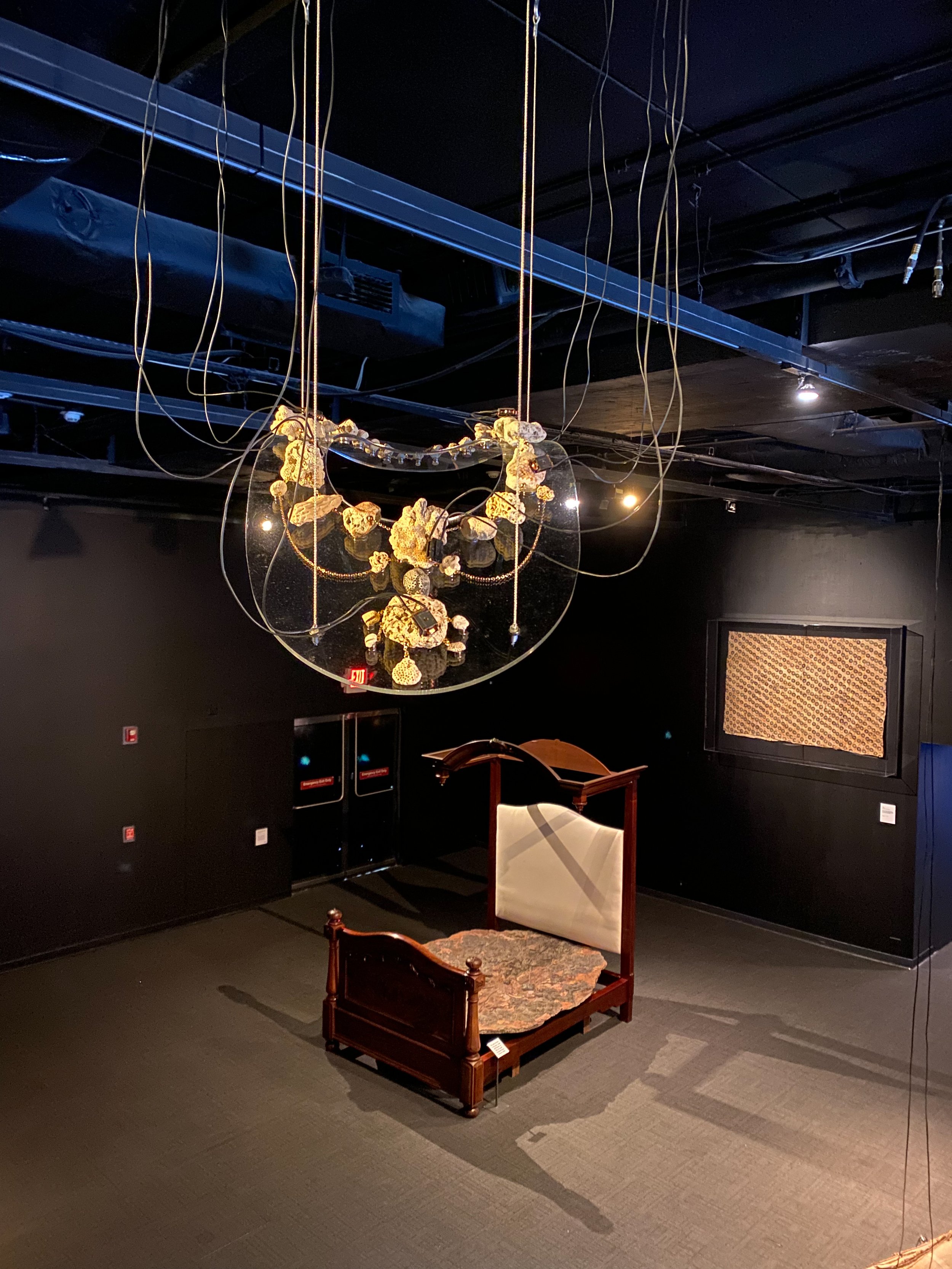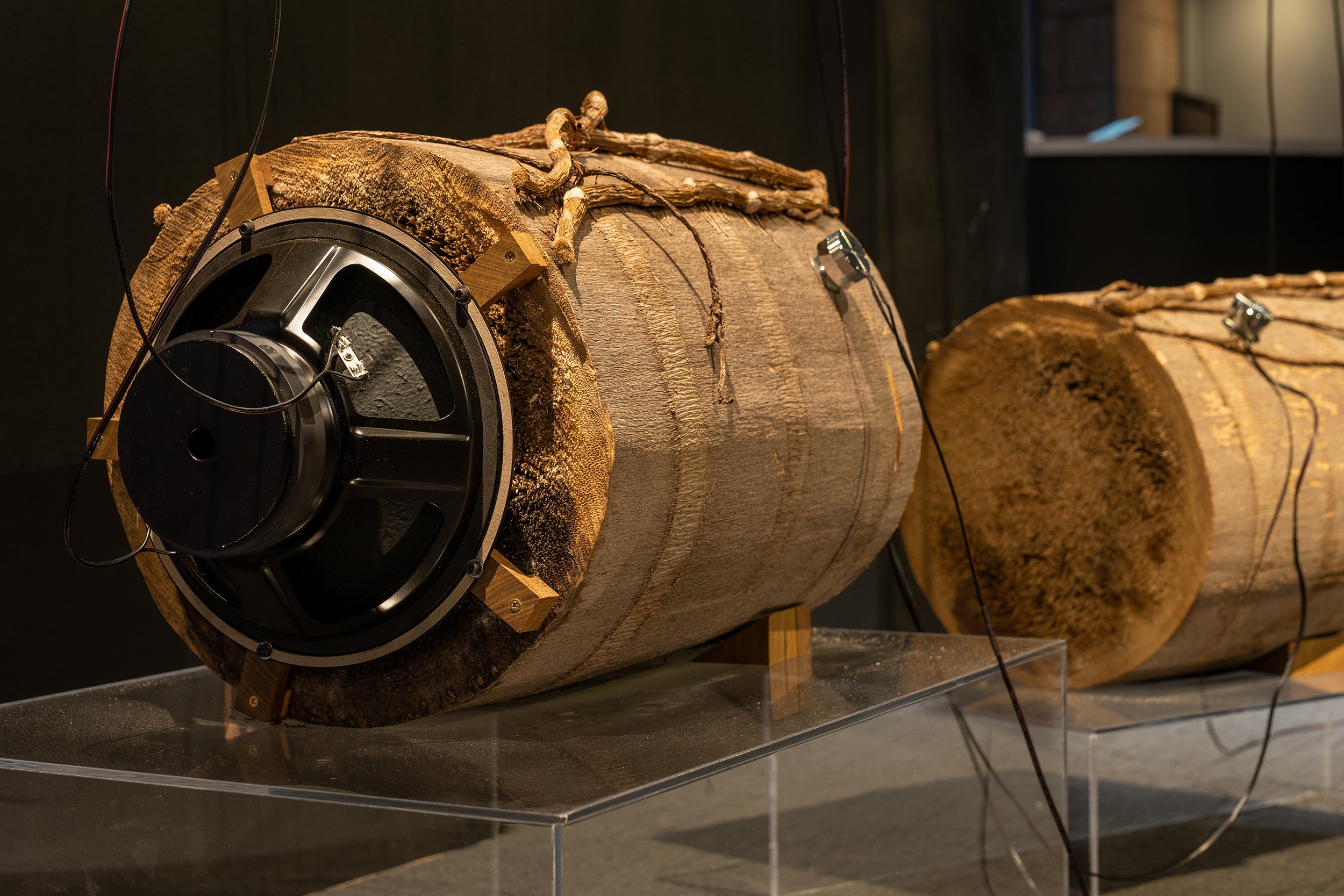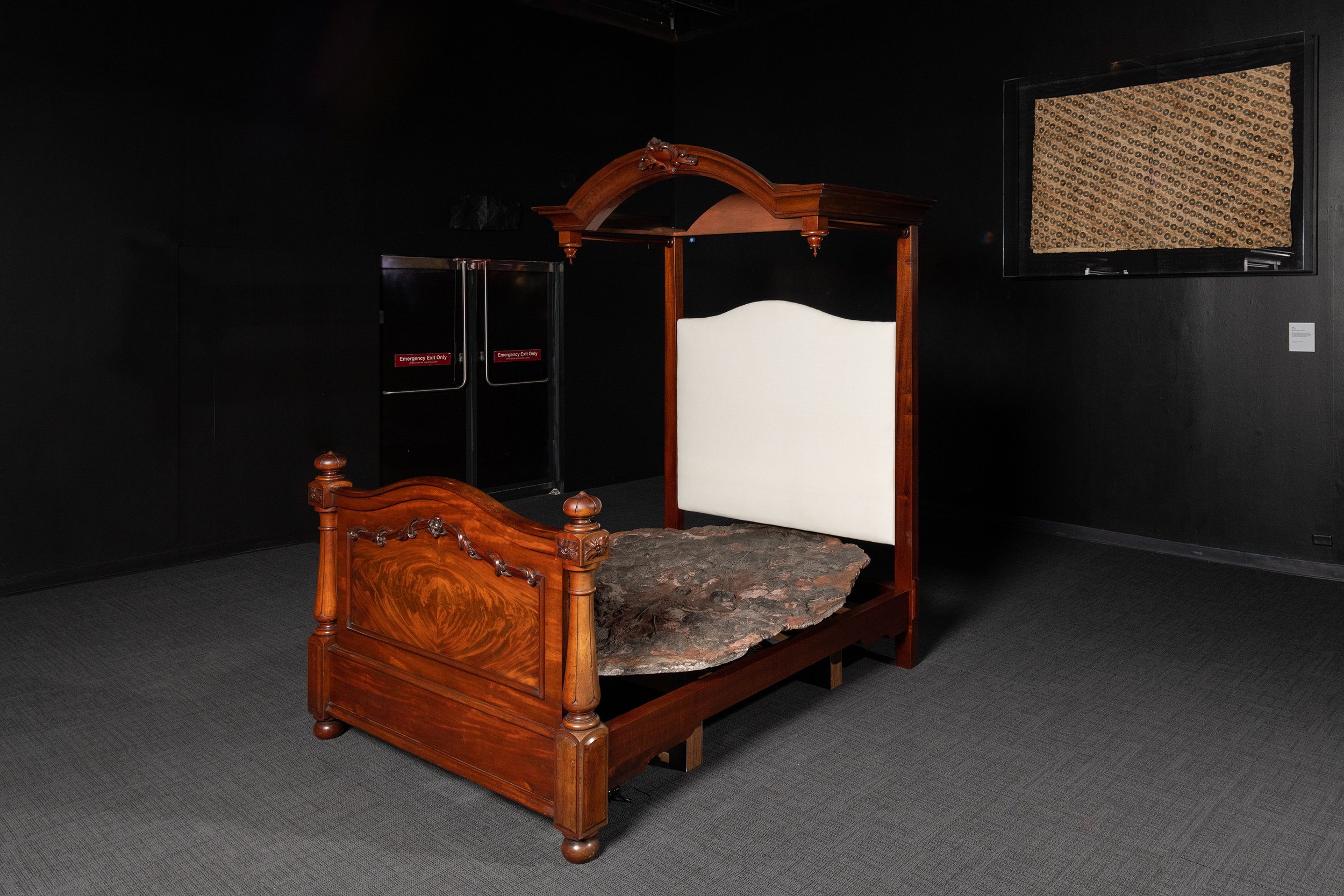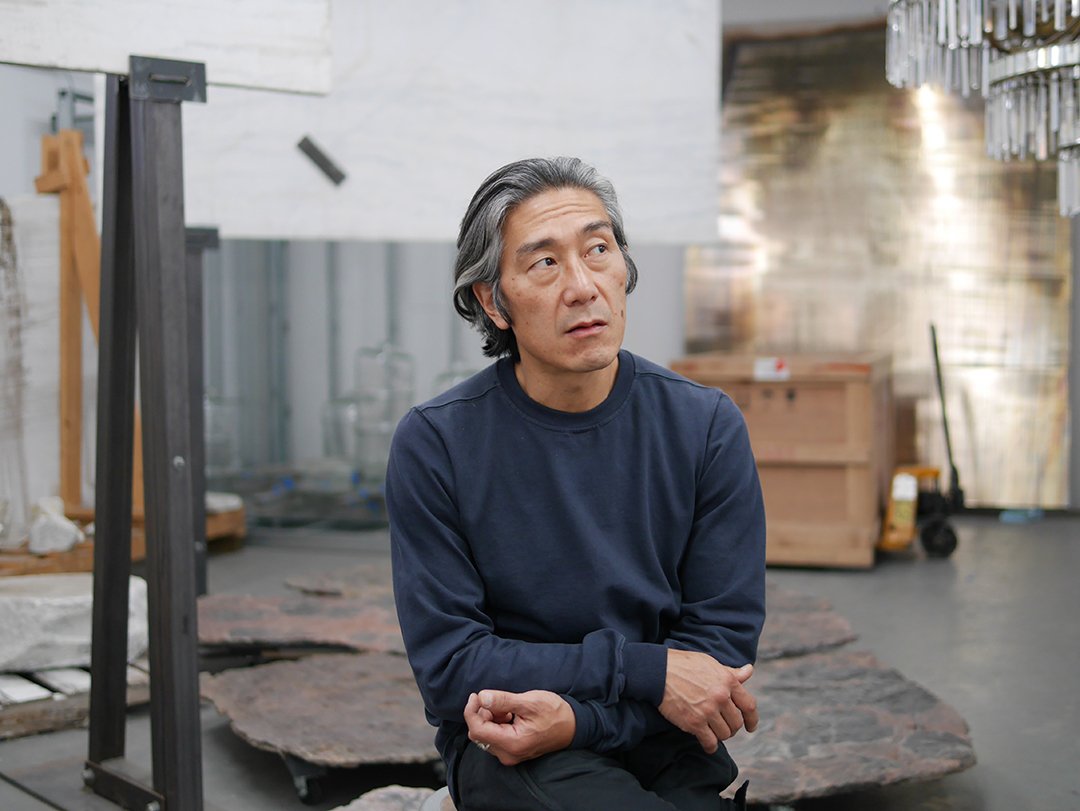hawai‘i triennial 2022
@ BISHOP MUSEUM
Michael Joo
with Alchemyverse (Yixuan Shao and Bicheng Liang)
b. 1966, Ithaca, New York
lives and works in New York City
Installation views: Michael Joo with Alchemyverse (Yixuan Shao and Bicheng Liang), Cosmogenic Conduction: Fossil Bed, 2022, sandstone fossil “sea lily” slab sonofied with 12 voices via bone-conducting transmitters, Victorian-era mahogany bed modified with ipe wood, text excerpt from The Kumulipo: An Hawaiian Creation Myth, as translated by Queen Lili‘uokalani (recited by Josh Tengan, December 2021); Cosmogenic Conduction: Proxy, 2022, coral fragments collected at Sand Island Beach (O‘ahu) sonofied with bone-conducting transmitters, brass, steel, plexiglass, base, text excerpt from The Kumulipo; Cosmogenic Conduction: Phantoms, 2022, fragmented Pritchardia sonofied with bone-conducting transmitters, vitrine bases; Cosmogenic Conduction: Harmonic (zero dB), 2022, field recordings from Halema‘uma‘u crater, salvaged concrete slabs, text extracted from “Giant of the Pacific” Mauna Loa Reconnaissance 2003 (Dougherty, Moniz-Nakamura, 2004), Life in Hawaii (Titus Coan, 1882), photo of Haleakalā silversword (Argyroxiphium sandwicense subs. macrocephalum) by NPS (www.nps.gov/hale/learn/nature/ silversword.htm); Cosmogenic Conduction: Aragonite Transmitter, 2022, savaged concrete columns, hydrophone recordings from the MEGA Lab Cam livestream at Keāhole Point (February 07, 2022, 20:16:03–21:00:13), Bishop Museum, HT22, Honolulu. Courtesy of the artist and Hawai‘i Contemporary. Photos: Miwako Tezuka and Christopher Rohrer.
Working at the interstices of art and science, Michael Joo’s studio practice creates space for an abstract analysis into ideas inspired by the metaphysical and thinking sciences. Born into a family of research scientists, Joo was immersed in academia from an early age and initially pursued a degree in science before switching to the fine arts, gaining his BFA from Washington University, St Louis, Missouri, and his MFA from the Yale School of Art, New Haven, Connecticut. Engaging with a variety of arts media ranging from painting, photography, printmaking, and sculpture, Joo explores ideas related to symbols and abstraction, the past and present, and the human and natural. His multifaceted art practice highlights the union of art and science, two disciplines that cannot be fully divorced from each other.
Joo’s investigation of sculpture and post-objecthood has been a continuous thread throughout his career, allowing for visual observation into the variable conditions of social space and subjective identities. In his series Single Breath Transfer (2017–), Joo produces a number of glass-blown sculptures that capture his breath. The laborious process entails blowing air into discarded plastic bags culled from streets and local supermarkets before casting these using wax or liquid nitrogen, and then transforming them into ceramic molds. A glassblower blows into the molds, creating a glass version of the shape of the mold, poetically cementing Joo’s impermanent breath into the ultimate readymade.
Through ideas pertaining to genesis or origin, Joo explores the transference of knowledge, moving from one- to three-dimensional concepts and physical forms by subverting fixed principles and surfing in and between abstract scientific thought. For the recent body of work titled From Without (2020), Joo created a trio of 3D-printed sculptures that rest bodiless atop pillows. The sculptures are derived from scans taken from the Smithsonian Archives and feature the face of Anne Sullivan, the teacher and life-long companion of disability activist Helen Keller, who lost her sight and hearing as an infant. Sullivan’s teachings were conceptually received and translated by Keller without the aid of visual or aural perception, and rather as part of a sensory language. Taking into account this unique process of translation and transliteration, Joo’s sculptures question the role of art and science from a philosophical perspective. Subsequently, he probes the larger existential archival process of recording art, history, and the question of for whom, generating an ongoing dialogue on perception which is evident throughout his practice.
In his work Fossil Bed, created for HT22 in collaboration with multimedia artists Yixuan Shao and Bicheng Liang, Joo continues his ruminations on human relationships to deep time, space, and land. Developed in response to kapa in the collection of Bishop Museum and the histories of Hawaiʻi, the installation consists of a large fossil slab, one of many that Joo has collected over the past fourteen years from Morocco. Containing the 400-million-year-old fossilized remains of the Crinoid (sea lily), the audience is invited to relax on the slab, which itself is set upon a four-poster bed frame. The sacred creation chant Kumulipo is transmitted through the piece of ancient seabed to those who rest while distant sounds based on readings of Queen Lili‘uokalani’s text translation of the Kumulipo, which she undertook while imprisoned, draw participants into a meditative space in which to consider migration, displacement, and origin.
Michael Joo. Courtesy of the artist.
Michael Joo’s artworks investigate concepts of identity and knowledge in a hybrid, contemporary world. Joo’s artworks often blend and collide seemingly disparate elements such as science and religion, fact versus fiction, and high and low culture. Human intervention in nature and the forms generated by these intersections is a recurring backdrop for his work. Using a range of materials and media, and with an emphasis on process, Joo juxtaposes humanity’s various states of knowledge and culture, addressing the fluid nature of identity itself, and prompting us to question how and why we perceive the world as we do. In performance/video works, he has swam through a ton of MSG, waited in the wild for elk to lick salt off of his body, and walked against the flow of crude oil along the Trans Alaskan Pipeline.
Joo’s works are held in numerous public collections around the world, including the Brooklyn Museum, the Denver Art Museum, Frances Young Tang Teaching Museum and Art Gallery, Guggenheim Museum, Harvard Art Museums, Savannah College of Art and Design, the Israel Museum, Moderna Museet Stockholm, UCLA Hammer Museum, Walker Art Center.







